
The Golden Age of Hollywood: Its Rise, Decline, and Legacy
Over 100 years ago, it would have been hard to imagine the Hollywood of today. Massive international box office pictures with outrageous budgets are all fighting to be the next billion-dollar franchise film. Studios all over the world compete to rake in the most at the box office, or instead, now most seem to be shifting between box-office dollars and proprietary subscription services. There are many moving parts to the industry today, but that was not always the case.
The “Hollywood” that truly made Hollywood famous was controlled by just a few big studios. These studios weren’t just making movies; they practically owned the whole system. They held the rights to the pictures, had leading stars in multi-year contracts, and even owned all the major theaters. They also propelled technological advances like talking pictures, studio lighting, anamorphic lenses, aspect ratios, and color film.
Let’s dive into the early years, the evolution of cinema, and the downfall of the Golden Age of Hollywood.
When did the Golden Age of Hollywood happen?
There isn’t a definitive starting year to the Golden Age of Hollywood. Some scholars credit 1915’s The Birth of a Nation as one of the earliest films of the period, but the true mass appeal of cinema and non-stop release of films didn’t happen until the 1920s and 1930s.
A considerable proponent that kicked off the success of cinema actually came from an economic downturn. The Great Depression that followed the 1929 stock market crash turned Hollywood into a powerhouse. Now, not to discredit the films of the roaring twenties, which can be argued to be part of the Golden Age of Hollywood, once the Great Depression started, a majority of American turned to cinema as their form of escapism. Why? Movie tickets were often far cheaper than tickets to theater shows and concerts. According to history.com, up to 80 million Americans went to the movies each week during the Depression.
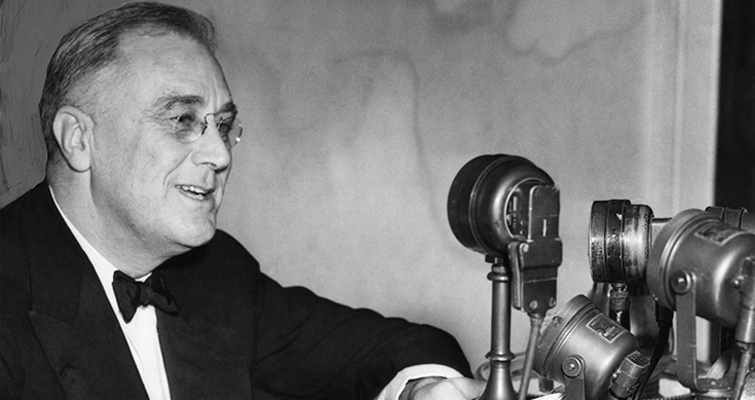
During this Depression, when the spirit of the people is lower than at any other time, it is a splendid thing that for just 15 cents an American can go to a movie and look at the smiling face of a baby and forget his troubles.
Franklin D. Roosevelt on watching Shirley Temple films.
Ten years later, 1939 saw the release of some of the biggest films in cinematic history. Leveraging technological advances in image capture from lensing to color film advances, movies like The Wizard of Oz, Gone with the Wind, Mr. Smith Goes to Washington, and The Hunchback of Notre Dame dazzled and captivated audiences.
Historically speaking, more films were made in the 1920s and 1930s than pretty much any other decade — EVER. Even in comparison to major releases seen today, hundreds of more films were made and released in the 1930s. Genre films were big hits, especially westerns, gangster and crime movies, and musicals.
The Golden Age of Hollywood began to falter by 1948 and fully came to an end by the 1960s. More on that in a bit.
The “Big Five” Major Studios of the Golden Age
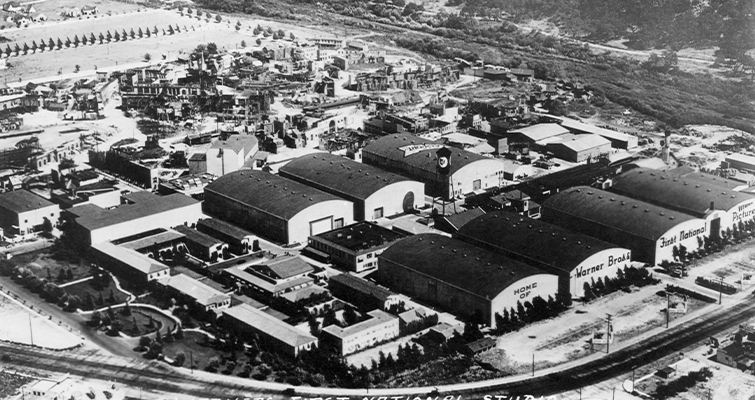
Most of Hollywood of the 1930s through the end of the Golden Age was ruled by five studios, Metro Goldwyn Mayer (MGM), RKO, 20th Century Fox, Warner Bros., and Paramount Pictures. What set these five apart from other smaller studios like Universal, United Artists, and Columbia was the fact that the five major studios owned the entire cinematic pipeline. This vertical integration gave them absolute control over everything. They owned the studio lots and camera equipment, they locked talent into exclusive contracts forbidding them to work with other studios while under contract, they owned all aspects of production, distribution, and exhibition. From before cameras started rolling until the theaters projectors stopped, the entire process was controlled by the studios.
MGM

MGM was the biggest of the five major studios and often reigned as the box office king throughout the 1930s. For over a decade during the Golden Age, MGM was the most financially successful studio. Led by movie mogul Louis B. Mayer, MGM grew a powerhouse roster of talent dubbed under their “star system.” This also meant the studio fully controlled talent both on and off-screen.
The talent roster included legendary names like Clark Gable, Spencer Tracy, Greta Garbo, Joan Crawford, Lon Chaney, William Powell, Buster Keaton, Wallace Beery, Jean Harlow, Robert Montgomery, Judy Garland, Gene Kelly, and Laurel and Hardy.
At its peak, MGM had 16-18 pictures shooting at the same time. The studio had six lots with over 40 cameras and 60 sound machines.
Notable MGM golden age films:
- The Merry Widow (1925)
- The Big Parade (1925)
- La Bohème (1926)
- The Scarlet Letter (1926)
- The Patsy (1928)
- Perfect Day (1929)
- The Kiss (1929)
- Freaks (1932)
- Mutiny on the Bounty (1935)
- A Night at the Opera (1935)
- The Wizard of Oz (1939)
- Gone with the Wind (1939)
- The Philadelphia Story (1940)
- Gaslight (1944)
- An American in Paris (1951)
- Singin’ in the Rain (1952)
- Forbidden Planet (1956)
- Cat on a Hot Tin Roof (1958)
- Ben-Hur (1959)
- North by Northwest (1959)
- The Time Machine (1960)
- Lolita (1962)
- How the West Was Won (1962)
Twentieth Century-Fox

Twentieth Century-Fox was perhaps the biggest rival to MGM in terms of financial success during the Golden Age, often coming in as the second most successful studio. Formed in 1935 after the merger of Fox Films and Twentieth Century Pictures, the company was led by Darryl F. Zanuck and Joseph M. Schenck. The famous William Fox had already lost control of the Fox Film Corporation after a hostile takeover, and he was never involved with the film and television studios that bore his name.
The studio’s roster of talent included Tyrone Power, Linda Darnell, Carmen Miranda, Don Ameche, Henry Fonda, Gene Tierney, Sonja Henie, Betty Grable, Alice Faye, and Shirley Temple. They also produced theatrical versions of Broadway hits from Rodgers and Hammerstein.
Notable 20th Century Fox golden age films:
- The Little Colonel (1935)
- Les Misérables (1935)
- Charlie Chan in Shanghai (1935)
- White Fang (1936)
- Rawhide (1938)
- The Little Princess (1939)
- Young Mr. Lincoln (1939)
- The Adventures of Sherlock Holmes (1939)
- The Grapes of Wrath (1940)
- Rebecca (1940)
- The Mark of Zorro (1940)
- How Green Was My Valley (1941)
- A Tree Grows in Brooklyn (1945)
- Miracle on 34th Street (1947)
- All About Eve (1950)
- The Day the Earth Stood Still (1951)
- The Robe (1953)
- The King and I (1956)
- The Diary of Anne Frank (1959)
- The Hustler (1961)
- The Longest Day (1962)
- Something’s Got to Give (1962)
- Cleopatra (1963)
- The Sound of Music (1965)
Warner Bros.

Warner Bros. was the powerhouse studio behind The Jazz Singer (1927) with Al Jolson, credited as the first feature-length film with audible dialogue. The company started as a theater in Pennsylvania, screening films like The Great Train Robbery. Warner Bros. officially established itself as a movie-focused studio on Sunset Boulevard in California in 1923. The “bros.” in the name comes from the actual brothers, Harry, Albert, Sam, and Jack Warner.
The company produced films throughout WWI and, in 1919 acquired the rights to the Broadway play The Gold Diggers, which they turned into a series of films. Around the same time, the studio established the superstar dog Rin Tin Tin, who became their top earning star.
Throughout the 1920s, the studio was known for its musicals and color films. As musicals declined in popularity during the Great Depression, the studio moved into animated short films (Looney Tunes and Merrie Melodies) and gangster films, giving rise to actor James Cagney. Other notable Warner Bros. stars of the Golden Age included Humphrey Bogart, Bette Davis, Olivia de Havilland, Paul Muni, Errol Flynn, Joan Blondell, Edward G. Robinson, Warren William, Barbara Stanwyck, Lauren Bacall, and Doris Day.
Notable Warner Bros. golden age films:
- Where the North Begins (1923)
- Don Juan (1926)
- The Jazz Singer (1927)
- The Desert Song (1929)
- Looney Tunes (1930)
- Merrie Melodies (1931)
- Little Caesar (1931)
- The Public Enemy (1931)
- 42nd Street (1933)
- Gold Diggers of 1933 (1933)
- A Midsummer Night’s Dream (1935)
- ‘G’ Men (1935)
- Kid Galahad (1937)
- Angels with Dirty Faces (1938)
- The Adventures of Robin Hood (1938)
- Dodge City (1939)
- The Maltese Falcon (1941)
- High Sierra (1941)
- The Strawberry Blonde (1941)
- Casablanca (1942)
- Yankee Doodle Dandy (1942)
- The Big Sleep (1946)
- The Treasure of the Sierra Madre (1948)
- White Heat (1949)
- A Streetcar Named Desire (1951)
- Rebel Without a Cause (1955)
- Rio Bravo (1959)
Paramount Pictures

Paramount Pictures dates back to 1912 when Adolph Zukor founded the Famous Players Film Company. Legend has it that in the 1916 merger that created Paramount, Zukor honored his 24 original contracted actors and actresses with the stars above the Paramount logo. Still, the number of stars doesn’t always align with the number of contracts. The logo currently features 22 stars with allegedly no hidden meaning.
Over the years, Paramount contracts locked in stars like Douglas Fairbanks, Gary Cooper, Mae West, Mary Pickford, Marguerite Clark, Pauline Frederick, Gloria Swanson, Audrey Hepburn, Rudolph Valentino, Bing Crosby, Bob Hope, Charlton Heston, and Wallace Reid.
Paramount Pictures was also notorious for its introduction of block booking, where they forced theaters to purchase licenses for multiple films at once. This allowed them to quickly distribute their A-list and second-rate B films together, with some contracts bundling 52 to over 100 films in a single block. This practice led the the massive anti-trust United States v. Paramount Pictures landmark case. More on that later.
Notable Paramount golden age films:
- Wings (1927)
- The Love Parade (1929)
- Tom Sawyer (1930)
- Morocco (1930)
- Huckleberry Finn (1931)
- Dr. Jekyll and Mr. Hyde (1932)
- Movie Crazy (1932)
- A Farewell to Arms (1932)
- Duck Soup (1933)
- Alice in Wonderland (1933)
- Cleopatra (1934)
- Hop-a-Long Cassidy (1935)
- Gulliver’s Travels (1939)
- Road to Singapore (1940)
- Hold Back the Dawn (1941)
- Double Indemnity (1944)
- Sunset Boulevard (1950)
- The Greatest Show on Earth (1952)
- Shane (1953)
- Roman Holiday (1953)
- The War of the Worlds (1953)
- Rear Window (1954)
- White Christmas (1954)
- Sabrina (1954)
- The Man Who Knew Too Much (1956)
- The Ten Commandments (1956)
- Vertigo (1958)
- Psycho (1960)
- Breakfast at Tiffany’s (1961)
- The Man Who Shot Liberty Valance (1962)
RKO

RKO Radio Pictures, an abbreviation of Radio-Keith-Orpheum, was formed in 1928 when Radio Corporation of America (RCA) merged the Keith-Albee-Orpheum theater chain and Joseph P. Kennedy’s Film Booking Offices of America studio into a single entity focused on creating movies using RCA’s sound-on-film technology.
The studio produced iconic films during this era, including King Kong and Citizen Kane. It also took control of distribution for the fledgling Walt Disney Productions, which had previously distributed Silly Symphonies and Mickey Mouse short films through Columbia and United Artists. RKO distributed what the critics dubbed “Disney’s Folly,” the studio’s first feature-length animated film, Snow White and the Seven Dwarfs.
RKO was primarily known for its series of musicals starring Fred Astaire and Ginger Rogers but also produced a series of horror and noir films. Other RKO stars included legends Katharine Hepburn, Robert Mitchum, Cary Grant, Ingrid Bergman, Irene Dunne, Mary Astor, Maureen O’Hara, and Orson Welles. It was also home to a B-list yet-to-be famous television superstar Lucille Ball.
Notable RKO golden age films:
- The Vagabond Lover (1929)
- King Kong (1933)
- Little Women (1933)
- Top Hat (1935)
- Swing Time (1936)
- Snow White and the Seven Dwarfs (1937)
- Bringing Up Baby (1938)
- Room Service (1938)
- The Hunchback of Notre Dame (1939)
- Pinocchio (1940)
- Citizen Kane (1941)
- Dumbo (1941)
- The Pride of the Yankees (1942)
- Tarzan and the Amazons (1945)
- The Bells of St. Mary’s (1945)
- Dick Tracy (1945)
- It’s a Wonderful Life (1946)
- Notorious (1946)
- Fort Apache (1948)
- Treasure Island (1950)
- Cinderella (1950)
- The Thing from Another World (1951)
- Alice in Wonderland (1951)
- Oklahoma! (1955)
The “Little Three” Studios of the Golden Age
There were undoubtedly other big studios in the game, but not all had the power of the major five. Primarily Universal Pictures, Columbia Pictures, and United Artists were not as vertically integrated with control over the entire pipeline. Each owned a smaller number of theaters or had limited access to studios. They often partner with other studios to help with financing and distribution.
Universal Pictures

Founded in 1912, Universal Film Manufacturing Company (Universal Films) was born out of a group of nickelodeon owners who wanted to produce their own films and escape from paying fees to the Edison-Trust, which had a monopoly through patents on their motion picture systems. The company also made the move to begin crediting and naming movie stars in their films, something Edison’s company had refused to do. Their marketing promotions of Florence Lawrence and King Baggot are often credited as some of the first instances of using movie stars, though history shows the practice had been done at least once before in France.
In 1915 the company opened Universal City Studios in California, then the world’s largest motion picture production facility. It was also the first studio open to tourists. Universal Pictures did not own any of their own theaters and relied on branding their products to help lure audiences. The company dubbed their 1922 film Foolish Wives as the “first million-dollar movie” to come out of Hollywood.
The studio couldn’t afford to contract stars and either borrowed or hired freelance actors to star in films, Golden Age acting icons like Margaret Sullavan, Bing Crosby, W. C. Fields, James Stewart, Marlene Dietrich, and Abbott and Costello. The iconic horror films starring Lon Chaney, Boris Karloff, and Bela Lugosi are perhaps more synonymous with the Universal name. The studio would rely on distribution deals, sequels to horror films, and serial films to survive the 1940s.
Today Universal Pictures is the oldest surviving film studio in the United States fifth oldest in the world.
Notable Universal Pictures golden age films:
- 20,000 Leagues Under the Sea (1916)
- Foolish Wives (1922)
- The Hunchback of Notre Dame (1923)
- The Phantom of the Opera (1925)
- All Quiet on the Western Front (1930)
- King of Jazz (1930)
- Dracula (1931)
- Frankenstein (1931)
- The Mummy (1932)
- The Invisible Man (1933)
- Imitation of Life (1934)
- Show Boat (1936)
- Three Smart Girls (1936)
- The Green Hornet (1940)
- Flash Gordon Conquers the Universe (1940)
- Hamlet (1948)
- It Came from Outer Space (1953)
- Creature from the Black Lagoon (1954)
- Spartacus (1960)
- To Kill a Mockingbird (1962)
- The Birds (1963)
Columbia Pictures

In 1918, Jack and Harry Cohn and business partner Joe Brandt founded Cohn-Brandt-Cohn (CBC) Film Sales Corporation. The adopted the name Columbia Pictures in 1924 and later adopted the imagery of Columbia, the female personification of the United States, Americas, and the New World.
The studio was a minor player in Hollywood, eventually finding success with The Three Stooges short films. Columbia became known for screwball comedies, westerns, and comic serials. Columbia was also one of the first distributors of Mickey Mouse short films. The studio’s major contract stars included Jean Arthur, Cary Grant, Rita Hayworth, Jack Lemmon, Rosalind Russell, Glenn Ford, Ann Sothern, Buck Jones, Charles Starrett, Gene Autry, and William Holden. It was director Frank Capra that helped elevate the studio into a Hollywood player with his renowned films like It Happened One Night.
Notable Columbia Pictures golden age films:
- Lady for a Day (1933)
- The Three Stooges (1934)
- It Happened One Night (1934)
- Mr. Deeds Goes to Town (1936)
- Mr. Smith Goes to Washington (1939)
- Only Angels Have Wings (1939)
- The Lady in Question (1940)
- Meet John Doe (1941)
- Batman (1943)
- The Phantom (1943)
- The Lady from Shanghai (1947)
- All the King’s Men (1949)
- From Here to Eternity (1953)
- On the Waterfront (1954)
- The Bridge on the River Kwai (1957)
- 3:10 to Yuma (1957)
- Anatomy of a Murder (1959)
- Lawrence of Arabia (1962)
- Bye Bye Birdie (1963)
United Artists

United Artists was founded in 1919 by Hollywood heavyweights Charlie Chaplin, D.W. Griffith, Mary Pickford, and Douglas Fairbanks. The goal was to allow actors to control their own interests versus signing themselves over to the major studios and getting locked into exclusivity contracts.
Griffith left the company in 1924, and Joseph Schenck was brought in as President. During his time as President, Schenk formed a partnership with Pickford and Chaplin to establish international theaters under the United Artists, opening first in Mexico and Canada. Schenk asked for ownership in United Artists and was denied, so he left to help form Twentieth Century Fox.
The company had successes and challenges throughout the 1930s and 40s, culminating in lawsuits and Fairbanks’ death. By the mid-1950s, Chaplin and Pickford sold their shares, and the company soon went public. United Artists had a string of successes towards the end of the Golden Age. By the 1960s, they found hits with the Beatles, Pink Panther, James Bond, Stanly Kramer films, and the spaghetti westerns of Sergio Leone.
Notable United Artists golden age films:
- His Majesty, the American (1919)
- Pollyanna (1920)
- The Mark of Zorro (1920)
- Robin Hood (1922)
- Steamboat Bill, Jr. (1928)
- City Lights (1931)
- Scarface (1932)
- Mr. Robinson Crusoe (1932)
- The Count of Monte Cristo (1934)
- A Star Is Born (1937)
- Stagecoach (1939)
- Wuthering Heights (1939)
- The Great Dictator (1940)
- Marty (1955)
- 12 Angry Men (1957)
- Some Like It Hot (1959)
- The Magnificent Seven (1960)
- The Apartment (1960)
- The Alamo (1960)
- The Manchurian Candidate (1962)
- Dr. No (1962)
- The Great Escape (1963)
- It’s a Mad, Mad, Mad, Mad World (1963)
What caused the decline of the Golden Age of Hollywood?
As for the end of the Golden Age, again, film scholars are torn on a definite year. Some claim the 1948 breakup of studios, but the traditions and scope of production lasted well into the 1960s.
Perhaps the biggest killer of the Golden Age of Hollywood was the beginning of the Golden Age of Television which was around 1947 through the 1960s. Generally speaking, the mid-1960s is often considered the end of both Golden Ages.
Let’s dive into a few key moments that eventually changed the fate of Hollywood.
The Hays Code
The Hays Code did not directly cause the end of the Golden Age of Hollywood. However, it’s still an important note to understand how studios wanted to avoid government interference in the industry at all costs.
Both the silent era and early golden age of Hollywood were rocked with celebrity scandals and raunchy depictions of sex and violence in films. In the early 1920s, there was public and political pressure mounting to create moral standards for motion pictures. The studios feared the increasing amount of film censorship bills throughout the United States, especially after the 1915 ruling of Mutual Film Corporation v. Industrial Commission of Ohio declared that laws of free speech did not apply to motion pictures. The studios decided to self-regulate the industry to avoid any further government interference.
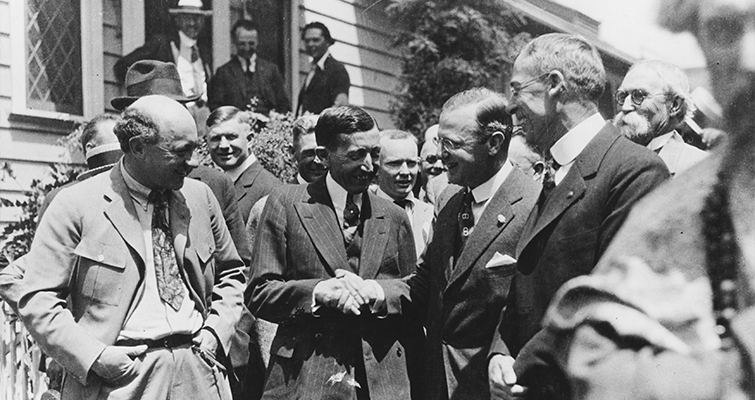
Postmaster General Will H. Hays was enlisted to create a code of standards. The Presbyterian elder formed a committee to discuss film censorship, in which they determined a list of “Don’ts and Be Carefuls.” The 1927 list included 11 topics that were best to be avoided entirely and 25 topics that should be handled carefully. It established the “Pre-Code” era of censorship in Hollywood.
During the Great Depression, films that seemingly ignored the code were financial successes. Since there was no actual enforcement of the code, studios continued to ignore the rules to capitalize on revenue. In 1934 the Production Code Administration was established, which required all films released on or after July 1, 1934, to obtain a certificate of approval before their release.
Without the Hays Code, the Golden Age of Hollywood may have ended sooner than it did. Studios now faced true censorship, which caused changes to scripts, wardrobes, and release schedules. Again, all of these sacrifices were accepted by the studios to avoid the inevitable government interference of their monopoly over the film industry.
The United States v. Paramount Pictures
Remember the mention of Paramount Pictures block booking up above? Where they bundled the release of multiple pictures into deals, they forced on theaters. That single act is one of the biggest things that caused the downfall of the Golden Age. The Federal Trade Commission began investigating film companies during the silent era, and by 1938 the US Department of Justice sued the major movie studios.
A case was initially settled in 1940, which allowed the government to resume prosecution if studios were non-compliant. Studio requirements included:
- The Big Five studios could no longer block-book short films with features films
- The Big Five could block-book feature films, but the block size would be limited to five films
- Blind buying would be outlawed and replaced with trade showings for theaters to decide if they wanted to book a film
The studios did not fully comply, and thus a new case went on trial in 1945. The court ruled in favor of the studios, and the government appealed to the Supreme Court.
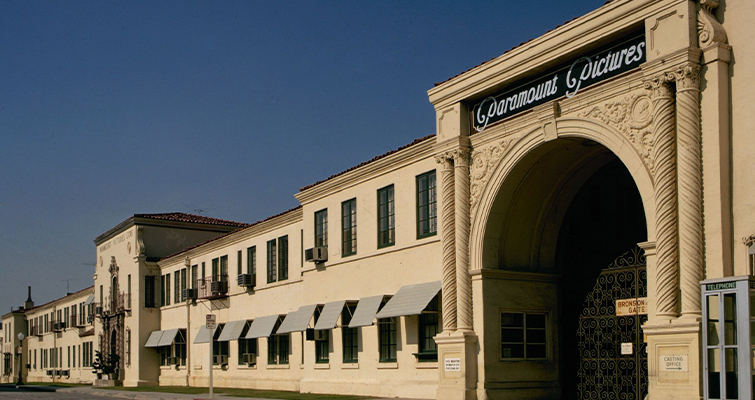
In 1948 the United States Supreme Court looked into violations of the 1890 Sherman Act, which outlawed any monopolization or conspiracy to monopolize. The anti-trust known as United States v. Paramount Pictures, Inc. lists Paramount Pictures as the primary defendant as the most prominent studios at the time, but all Big Five and Little Three studios were named in the case.
The vertically integrated studios were deemed an oligopoly, and in a 7-1 decision, they were forced to divest themselves of their theater chains. In what became known as the Paramount Decrees, Paramount Pictures was forced to split into two companies, a film company, and a theater chain.
After the decision, there was not only a rise in the number of independent movie theaters, but it also led to the rise of independent and art house studios and theaters. Foreign films and independent films screened in these theaters also weakened the Hays Code and were becoming freer from studio interference.
The Rise of Television
Television started making massive technological leaps in the 1930s, but with the onset of World War II, its expansion was halted until the post-war years. Between 1947 and the mid-1950s, the American suburbs grew 43 percent in size. Thousands of new homes and families moved into areas farther away from entertainment districts, and they turned their focus to home entertainment via radio and television.
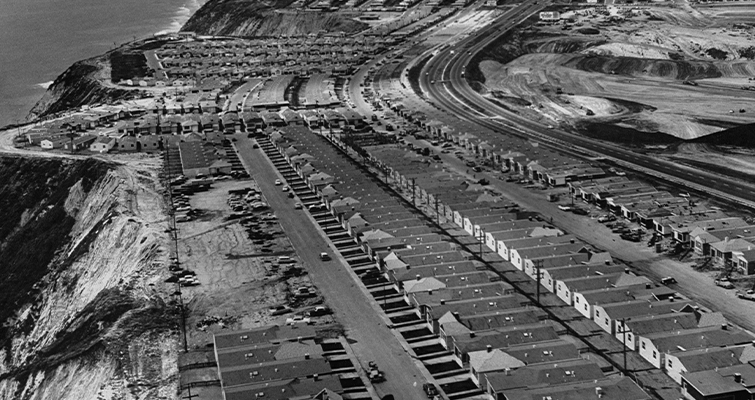
During the same years as the Paramount cases, television saw the rise of the Big Three networks, ABC, CBS, and NBC. By 1948, the networks began prime-time schedules seven nights a week. Film studios quickly moved to gain a controlling interest in the television networks (like the Paramount Television Network), but the Federal Communications Commission had the authority to reject TV licenses to companies engaged in monopolistic activities.
Throughout the 1950s, television benefitted from technological advances that now only brought color televisions into homes, and the overall prices of televisions continued to drop significantly. By the 1960s, more than half of American homes had a television set. With free entertainment currently broadcast into people’s homes, studios had to diversify by producing television shows, licensing films for broadcast or looked to other options like opening theme parks.
The Legacy of the Golden Age of Hollywood
Perhaps aside from the original creation of the motion picture camera and the digital revolution the film industry continues to go through now, most major technological advances, achievement, and experiments were conducted during the Golden Age of Cinema.
Here are just a few things the Golden Age of Hollywood is responsible for:
- Synchronous Sound
- Continuity Editing
- Montage Editing
- 24 frame-per-second
- Dubbing
- Color Film
- Technicolor
- Studio Lighting
- Three Act Structure
- 180-degree rule
- Aspect Ratios
- Widescreen
- Cinemascope
- Compositing
- Blue/Green Screen
- Camera Support
- Crane
- Dolly
- 3D Films
- Acting School
- Vocal Coaches
- Make-up Styles and Beauty Standards
- Costume Departments
- Ethics Code / Ratings
- Animated Feature Films
Cover image by Mgm/Kobal/Shutterstock





